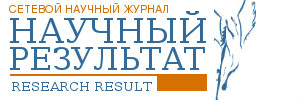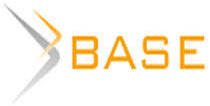Communicative approach in departmental foreign language teaching
Introduction. The relevance of foreign language proficiency in the current context of departmental work is due to several key factors, such as international cooperation, information security, professional development and increased competition. A communicative approach to foreign language training in departments has significant advantages and contributes to improving the efficiency of the learning process. Research goal. To identify the fundamental principles and features of the communicative approach that promote the efficiency of foreign language training within departmental education. Methodology and methods. The research was conducted using a comprehensive approach that included historical, theoretical-methodological and comparative methods. The following strategies were employed to achieve the research goal: the stages of formation and development of the communicative approach in the methodology of foreign language teaching were examined since the mid-twentieth century; an analysis of existing studies and publications by Russian and foreign researchers was conducted to identify the key characteristics and principles of the communicative method, and to determine how these could be adapted to the conditions of departmental educational organisations. Results. The study provides historical background for the emergence of the communicative approach in Russia and abroad. It was revealed that the fundamental principle of the communicative approach is the emphasis on live communication, the creation of conditions for the natural expression of thoughts and emotions, the active inclusion of cadets in the communication situation, and the modeling of life situations. The methodology involves making educational materials and tasks as relevant to everyday life as possible, encouraging oral practice and motivating students to independently formulate their own statements. The article identifies the specific features of teaching foreign languages to cadets in departmental educational organizations, which are determined by the following factors: specialized training; limited freedom to choose materials; the need for quick results; a high degree of responsibility and discipline; political, ideological, and socio-psychological constraints, etc. The study provides examples of role-playing games, discussions, project assignments and multimedia resources that can be used in foreign language classes at departmental educational organizations. Conclusion. The communicative approach, which uses communicative methods, is widely used in many countries around the world, including Russia, and is recognised as one of the most effective ways to learn foreign languages in educational organisations. The main feature of adapting the communicative method is to preserve the general principles of the methodology and modify them to suit the needs of a specific category of students – cadets.

















Пока никто не оставил комментариев к этой публикации.
Вы можете быть первым.
Azimova, S. (2019), “The communicative approach in English language teaching”, Bulletin of Science and Practice, 5 (4), 471-475. DOI: 10.33619/2414-2948/41/70. (In Russian).
Coy, M.N. (2009), “Practical approaches to foreign language teaching and learning”, Peter lang Group AG, Frankfurt am Main, available at: https://www.peterlang.com/document/1105901. (In German).
Holmes, J.N. (1988), “Speech synthesis and recognition”, Van Nostrand Reinhold, London. (In UK).
Isakov, A.A. and Isakova, A.A. (2019), “Contextual approach in developing communicative competence in foreign language lessons at university”, European Proceedings of Social and Behavioral Sciences, 78, 332-341. https://doi.org/10.15405/epsbs.2020.01.39. (In Russian).
Jedlicka, J.S., Brown, S.W., Bunch, A.E. and Jaffe L.I. (2002), “A comparison of distance education instructional methods in occupational therapy”, J. of Allied Health, 31(4), 247-251. (In USA).
Kolobkova, A.A. (2019), “About the pedagogical legacy of E.I. Passov”, Pedagogical journal, 9 (6), 367-375. (In Russian).
Kourova, A.V. and Mikhanova, O.P. (2015), “International educational exchange programs: a brief historical overview”, News of Higher Educational Institutions, 4 (36), 165-175. (In Russian).
Lomteva, T.N. and Reshetova, I.N. (2012), “The history of the development of a communicative approach in the domestic methodology of teaching foreign languages”, Bulletin of the State University of Foreign Languages, 2, 291-294. (In Russian).
Tretyakova, G.V., Chernyishkova, N.V. and Rosaria Filone, R. (2021), “Foreign internships as a factor of foreign language teachers”, Professional Development, 14 (33), 1-15. https://doi.org/10.20952/revtee.v14i33.15125. (In Russian).
Soliyev, A.A. (2020), “Relevance of foreign language proficiency in the modern world”, World science, 5 (38), 94-96. (In Uzbekistan).
Shalimova, O.N. (2024), “Methods of foreign language teaching in educational organizations of the Ministry of Internal Affairs of Russia”, Trends in the development of science and education, 114 (2), 75-77. (In Russian).
Shchukin, A.N. (2013), “The content of the term “methodology” in the context of modern linguodidactics”, Foreign Languages at School, 1, 3-11. (In Russian).
Wilkins, D.A. (1972), Linguistic in language teaching, Great Britain, available at: https://rrpedagogy.ru/info/authors/p_rules/. (In UK).
Zydziunaite, V, Kaminskiene, L, Jurgile, V and Jezukeviciene, E. (2022), “Learning to Learn' Characteristics in Educational Interactions between Teacher and Student in the Classroom”, European Journal of Contemporary Education, 11 (1), 213-240. DOI: 10.13187/ejced.2022.1.213. (In Lithuania).